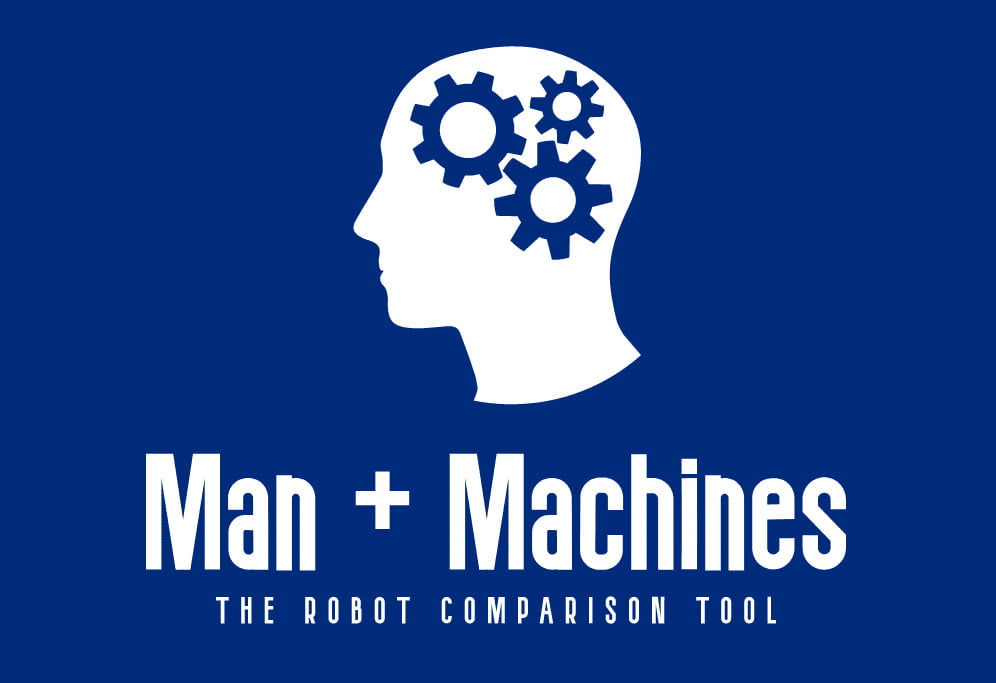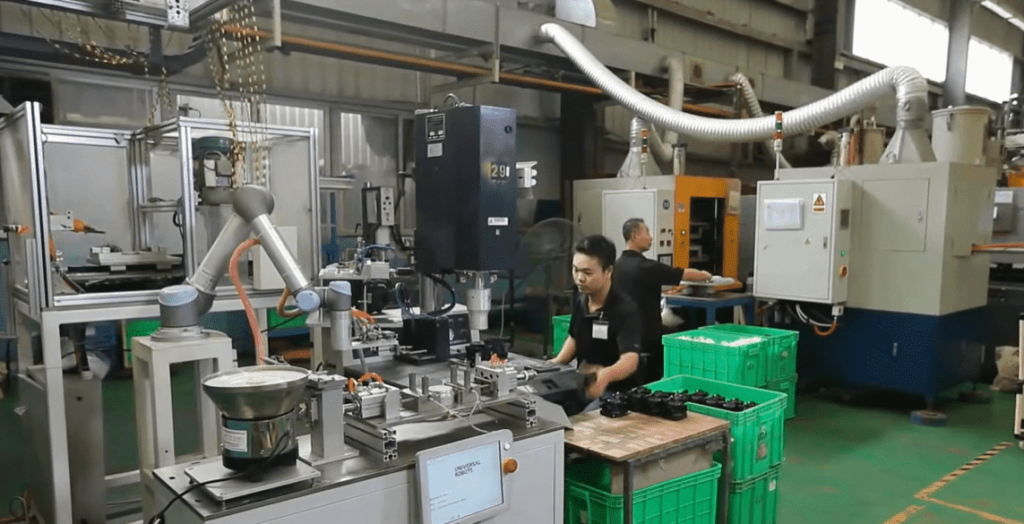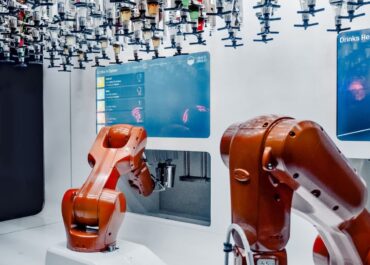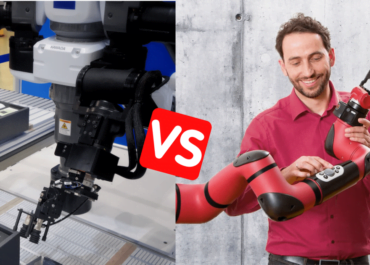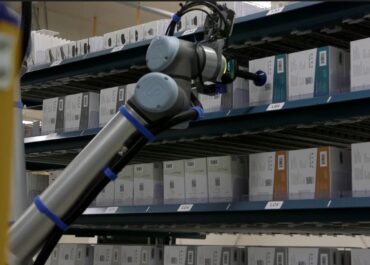Beyond the widespread marketing headline of “easy-to-use” collaborative robots, the reality is often more complex.
One reason is that, even though the latest cobot models provide fast setup and deployment, that doesn’t mean they will easily fit into your production line. You especially need to consider them in interaction with your existing workforce and processes.
Here’s a step-by-step guide on how to successfully integrate your cobots and leverage their potential for your productivity.
1# Clarifying your automation project

In this post, we assume that you have already found and purchased a collaborative robot. If this is not the case, you can read our article on the subject.
This means that you already have an idea of an automation project and the benefits you want to get from it. But this is not enough.
You also need to assess the consequences of adding a cobot to your application, and how to integrate them with your existing resources.
This means asking yourself some concrete questions:
- Where will I set up the cobot, and how much space do I have?
- Who will be responsible for setting up and teaching the cobot?
- Do my workers need to be trained in using these new tools?
- How will I ensure their safety?
- Do I need to adapt my existing application settings?
- Do I have the right effectors to use my cobot?
We’ll answer these questions one by one, to help you successfully integrate your cobot.
2# Making room for cobots

When setting up a new automation system, one key issue is your need for space. Production plants closely optimize work areas to limit unnecessary movement, and each application has thus a dedicated cell.
Fortunately, collaborative robots are designed to be more compact. They can work in close interaction with employees without risk. This can greatly reduce the demand for space, compared to an industrial robot that is enclosed in a cage.
However, cobots redefine the place of workers and tools in the robotic cell. They require workers to regularly intervene and monitor them. Workers might also need to have their cobots nearby to assist them. This provides an opportunity to create a more harmonious configuration between workers’ tasks and industrial machines.
So how do you do it? Here are some recommendations:
- Leverage the space gained by collaborative applications to add more space for the worker.
- To operate at full speed, some cobot models still need their own dedicated space. So you might keep some kind of robotic cell.
- Depending on the application, such as machine loading, welding or laser cutting, you might keep a safety distance, while allowing worker intervention.
- For other applications, an open space will allow workers to quickly intervene while performing other tasks in a nearby application.
- You should know that some cobots enable remote-control and programming via their user interface.
The key point to remember is that cobots thrive in open production lines, while still needing delineated safety areas.
3# Adapting your applications

Do you have an application in mind that you want to automate? Freeing up space in the workshop is not enough.
You also need to adapt the existing setting of your applications. Depending on the variability of the production flow, the machine, and materials, cobots need specific accommodations to operate.
This includes:
- Defining compatible communication points for machine-connected application.
- Adding conveyors with predictable and consistent flow for pick&place applications.
- Adapting cobot reach with mounting stand for a machine loading application.
- Building a safe and isolated workspace for applications involving hazardous elements (welding, laser cutting). In addition to that, you need also ensure the connection with welding tools, dispensing tools…
- Implementing computer vision modules to improve the sorting and assembly of parts.
- Thinking about autonomous moving robots to carry the cobot from one work cell to another.
- Don’t forget to set up on your robotic arm the right end effector for your application.
4# Choosing the right person to set it up

Unlike standard industrial robots, common cobot models are easily installed and deployed. However, workers must take precautions and know how to properly calibrate the various devices (choose the right input-output, calibrating the arm and effectors…). They need also to learn how to manipulate the robot’s controls and programming.
Hence the importance of choosing the right person to perform this task:
- A professional integrator can help you deploy and implement your collaborative application. But they can be expensive and may not understand your unique needs.
- A production employee with good technical skills can set up and program your robot efficiently. But that means wasting time on his routine tasks.
- Some cobot models provide high-quality training content. Average workers can thus set up and program following the manufacturer’s instructions.
5# Conducting a safety review

The cobot models you purchase generally comply with ISO 10218 and ISO 10218 strict safety standards.
However, assessing the risks of your collaborative application is still imperative. In addition to the speed and strength of the cobot, other tools will interact with your workers. This implies to :
- Defining the speed of operation of each application, with or without the presence of workers
- Predicting the points of contact and possible dangerous collisions for workers.
- Assessing the hazardousness of tools outside the robot, such as the welding arc, heavy parts, loading machines…
- Defining a safety area where the risk of injury is greatest.
- Configuring the safety features of the cobot in an optimal way to minimize any risk.
6# Training your team

Setting up and programming the robot is only the beginning of cobot integration. Besides those who operate and supervise the cobot, many other employees might have to interact with the cobot. T
To educate them and familiarize them with the safety protocol, you need to train them before deployment.
There are some educational tools you can use:
- Documents and training provided by the manufacturers
- Educational meetings and workshops organized internally or by your distributor
- Internally produced documents to guide your employees
- Our training content to save time on your processes
Now you know everything to integrate your brand new cobot into your production processes. And if you’re still having trouble deciding which collaborative robot is right for you, check out our comparison guide!
